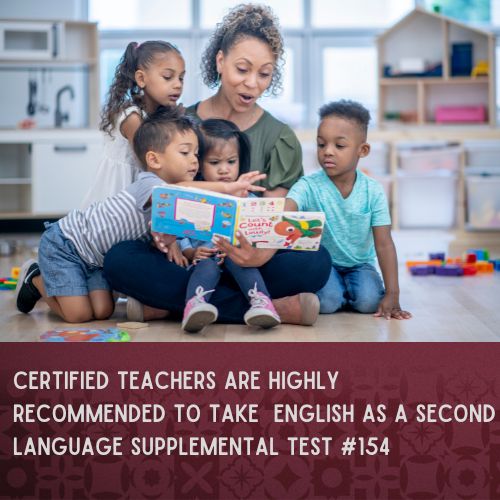ESL Endorsement

English as a Second Language (ESL) Supplemental (154)
ESL endorsement prepares licensed teachers and teacher candidates to also teach English Learners at the K-12 level. ESL is an add-on endorsement, so students need to be certificated in another area. The bilingual and ESL programs provide the following courses to gain knowledge and skills for the ESL endorsement state exam.
Course Topics
The ESL program is preparing students to teach English as a Second Language (ESL) in public schools. The growing number of English Learners (ELs) nationwide makes the ESL endorsement a practical addition to work with culturally and Linguistically Diverse populations (CLDs). The courses topics include
-
Service-learning with English Learners (10 hours)
-
Second language theories and foundations
-
Teaching methodologies
-
Culturally-relevant teaching pedagogy
-
Linguistically-accomodated teaching and learning
-
Fundamental language concepts and structure of the English language
-
Build an effective multicultural and multilingual learning environment
-
Assessment in ESL
-
Advocacy for ELs, parents, and communities
Frequently Asked Questions - ESL 154 Endorsement
Q1: I am monolingual, but I am interested in working with English learners (ELs), what exam I should take?
You will need to take the ESL Supplemental Exam (ESL-154) additionally to your degree plan. The certification allows you to work with non-English speakers to improve their reading comprehension and speaking of the English language.
Many school districts have a high percentage of ELs, and it is essential that teaching staff is equipped to meet the diverse needs of English learners. Elementary teachers who are not bilingually certified but who serve ELs in school districts are required to be ESL certified. In addition, many ELA teachers are required to be ESL certified, too.
The answer is definitely a YES! For grades Pre K-8, all teachers who serve ELs in a content-based model must be ESL certified. For an ESL Pull Out model, the ELA or Language Arts teacher must be ESL Certified to meet the linguistic needs of the ELs. Other teachers may be sheltered instruction trained. In grades 9-12, ELs may be served by ESL-certified teachers or sheltered instruction-trained teachers. ESL courses must be taught by teachers who have an English or English Language Arts Certification plus an ESL certification.
The bilingual/ESL program offered three courses to prepare students with the knowledge and skills to work with English learners (ELs) in different ESL settings. Students are recommended to take three courses:
-
EDBL 3315 Second Language Acquisition and Literacy Development
-
EDBL 3321 Methods of teaching non-English Speaking Child (Service-learning)
-
EDBL 3311 Foundation of Bilingual Education
